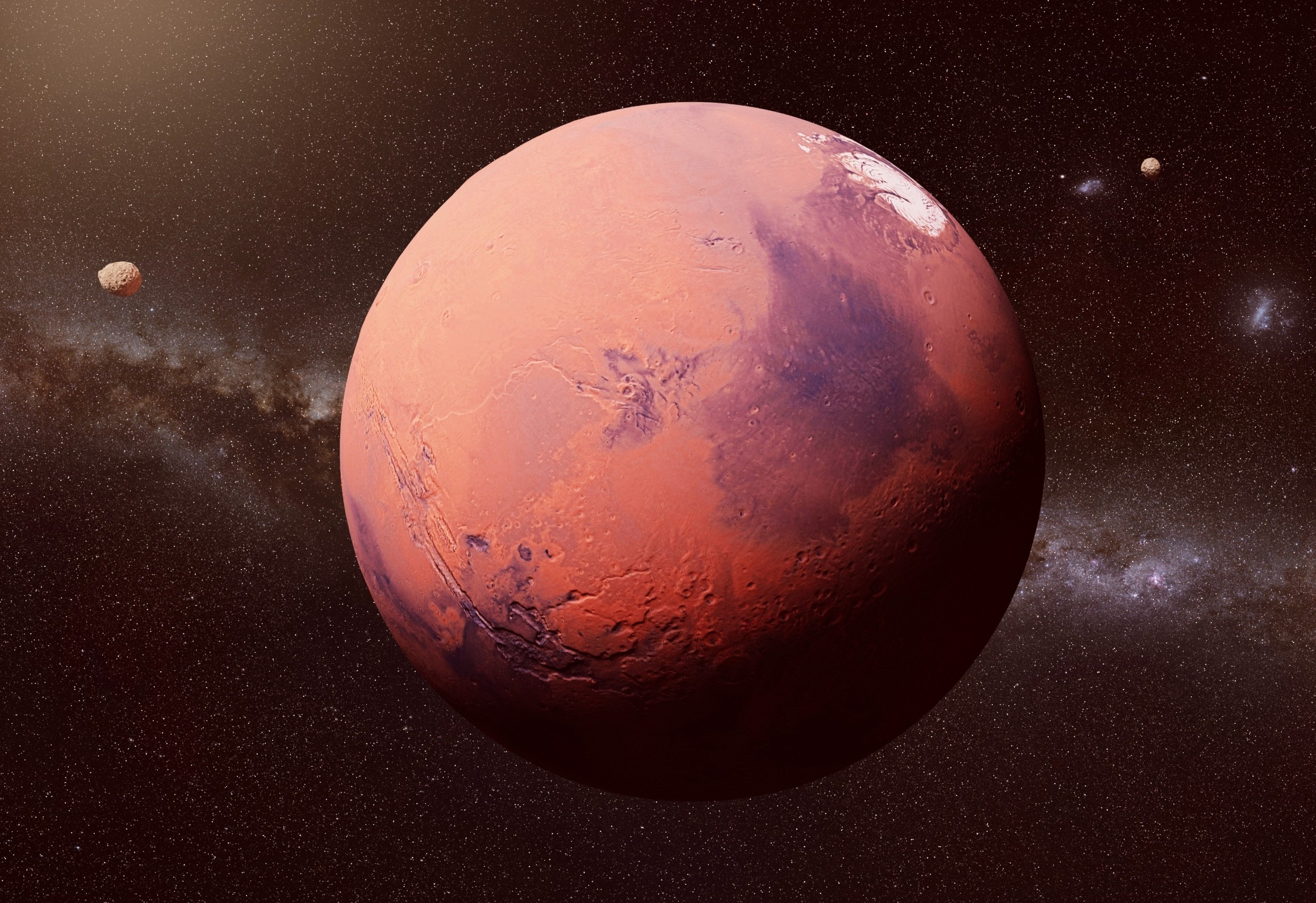Seen through an orbiter’s camera, the flanks of Martian volcanoes and crater walls often look as if thick syrup once oozed down them and then became crusted with rouge‑colored dust. For years, scientists believed those viscous tongues formed from piles of rocky rubble lightly cemented by ice.
But analyses during the past two decades shifted that view, revealing that at least some debris‑mantled glaciers hold far more frozen water than stone.
Now, a new radar survey argues that purity is the rule rather than the exception: glaciers across both hemispheres are more than 80 percent ice.
The findings suggest that much of Mars once endured sustained glaciation and that vast, readily accessible reservoirs of water await future explorers.
Lead author Yuval Steinberg completed the work as a graduate student at Israel’s Weizmann Institute of Science.
Steinberg’s mentors and co‑authors, Oded Aharonson and Isaac Smith, are affiliated with the Planetary Science Institute in Tucson, as well as with Weizmann and York University.
Chaos in Martian ice records
When Steinberg began combing through earlier literature, one pattern stood out – there was no pattern. Researchers had sampled different glaciers with different radar techniques and reported results in unmatched units.
“Different techniques had been applied by researchers to various sites, and the results could not be easily compared,” noted Smith. Some landmarks had never been probed, while others sported only partial analyses.
“One of the sites in our study had never been studied, and at two of the five sites we used, only partial analysis had been completed,” he said.
The team decided to impose order. They chose five debris‑covered glaciers scattered across the planet, including one fresh target, and processed all datasets the same way.
Key to their approach was SHARAD, the Shallow Radar instrument aboard the Mars Reconnaissance Orbiter. It beams 20 MHz radio pulses into the crust.
By measuring each glacier’s dielectric constant – how fast the radar wave travels through a material – and the loss tangent – how much energy the wave loses en route – they gathered key physical data. These values allowed them to infer the glacier’s subsurface composition.
Visual inspection alone reveals nothing because all debris‑laden glaciers look like drab pieces of soil.
The ice is nearly pure, everywhere
The surprise came when the radar math finished crunching. Whether perched near the equator or edging the mid‑latitudes, each glacier offered almost the same electrical signature.
That sameness implies a similar makeup: at least four-fifths ice by volume, capped by a veneer of rubble only a few meters thick that insulates the ice against thin, dry air.
“This is important because it tells us that the formation and preservation mechanisms are probably the same everywhere,” Smith said.
The uniformity hints either at one planet‑wide glaciation or at multiple ice ages that occurred under nearly identical conditions.
Snowfall once shaped Mars
Mars today is so arid that water ice can survive near the surface only where temperatures remain low and the atmosphere’s pressure prevents sublimation.
If the new study is correct, the planet must have repeatedly produced enough snow or frost to build thick glaciers, later burying them in dust that has kept them intact for hundreds of millions of years.
Knowing the minimum purity of those glaciers lets climate modelers refine how much water circulated through the past atmosphere. It also helps them track how snowfall patterns shifted with the planet’s tilt and how global dust storms may have armored the ice.
Water for future crews
Purity also matters for future crews who may mine ice for drinking water, oxygen, and rocket fuel. Extracting liquid from dirty ice takes energy and filtration gear; chopping blocks of almost pure ice simplifies the job.
The five glaciers studied lie in diverse terrains, suggesting many candidate sites for human outposts.
“We can conclude that Mars experienced either one widespread glaciation or multiple glaciations that had similar properties,” Smith said.
“By bringing together these sites and techniques for the first time, we were able to unify our understanding of these types of glaciers.”
Mapping more hidden ice on Mars
The researchers plan to extend their standardized survey to additional radar tracks. Each glacier tested refines global data and may reveal microclimates or local volcanic heating.
The method could even guide the Mars Ice Mapper mission concept, which would fly more advanced radar optimized for detecting shallow ice sheets.
The team revealed a planetary frozen archive beneath the dusty veneer – what first appeared to be sluggish, rock-rich flows. It records climate rhythms and beckons as a water source for the next great adventure in human exploration.
The study is published in the journal Icarus.
—–
Like what you read? Subscribe to our newsletter for engaging articles, exclusive content, and the latest updates.
Check us out on EarthSnap, a free app brought to you by Eric Ralls and Earth.com.
—–
